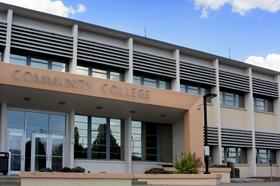According to a recent USA Today report, “Students Less Engaged at Community College,” many community college students begin to slip through the cracks of student involvement and academia in just the first few weeks of a new semester!
In your first year of community college, avoid the three major pitfalls that could impact your academic and professional career.
Pitfall #1: Not Meeting with Advisors
Experts assert that students must be engaged from the beginning of their academic careers. Too many students forgo meetings with advisors, an excellent resource for planning your educational and professional career. Take advantage of advisors from your first quarter in community college; your academic career will be much easier to manage.
Some community colleges have started mandating that all students engage in advising sessions, ensuring that students are personally informed of the various opportunities on campus.
This video explains why you should meet with your advisor.
Pitfall #2: Not Interacting with Instructors
In examining the potential positive outcomes of increased faculty and student interaction, USA Today argues that although faculty involvement is imperative for enhanced student success, only 15 percent of students reportedly discuss grades, issues, questions, or assignments with teachers outside of class. Only over half of all community college students surveyed have ever met with an instructor for assistance outside of class!
Meeting with your instructor is beneficial not only for your learning and grades but





















